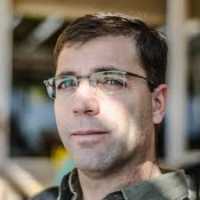
17 Jul Remote TeleSurgery Feasible Over 5G Networks
MedicalResearch.com Interview with:

Dr. Mattos
Leonardo Mattos, PhD
Head of Biomedical Robotics Lab
Advanced Robotics Department
Istituto Italiano di Tecnologia
Genova, Italy
MedicalResearch.com: What is the background for this study? What are the main findings?
Response: We have been working on robotic microsurgery for several years, and have developed robotic technology for it that is getting ready for use on humans. Then, 5G started to become a reality here in Italy, and we wanted to test if it could be used to enable remote telesurgery. So we joined forces with Vodafone Italia to realize this study and proof of concept demonstration.
Telesurgery has been a dream for over 20 years, and has been demonstrated already back in 2001. However, the wide scale adoption of the technology has been limited by many factors, including the limited availability of surgical robots and the lack of a telecommunication network that is fast and reliable enough for such operation. Recent technological progress is changing this scenario, with surgical robots being used in hospitals around the world and high-performance telecommunications system becoming widely available. This study shows that telesurgery is now feasible using the newest 5G telecommunication networks, enabling us to consider a large scale adoption of the technology.
MedicalResearch.com: What should readers take away from your report?
Response: The most important take away from this study is that remote telesurgery is feasible over the new 5G networks. Telesurgery is expected to bring many benefits for healthcare, for example by making possible collaborative telesurgery over very large distances, enabling new ways to provide surgical training, and allowing worldwide sharing of surgical expertise. Immediate applications include providing healthcare in remote sites not served by fixed telecommunication networks, such as disaster areas, rural areas or combat zones. In addition, the technology can ensure safe distancing between the surgeon and possibly infected patients, contributing to safeguard the health of critical medical personnel in pandemics such as the current one.
MedicalResearch.com: What recommendations do you have for future research as a result of this work?
Response: Research and development has to continue to prove the reliability and safety of telesurgery before it can be used on humans. In addition, issues regarding the legal and ethical aspects of remote telesurgery have to be studied and resolved, especially when considering international scenarios.
MedicalResearch.com: Is there anything else you would like to add?
Response: It is important to highlight the multidisciplinary character of this work, which involved teams of clinicians, roboticists and telecommunication engineers. It was only through an intensive collaboration between all of these teams that the necessary clinical and technological progress was achieved to enable telesurgery over 5G. Close collaboration between clinicians and engineers is key to the progress of healthcare technology.
Citation:
Operating From a Distance: Robotic Vocal Cord 5G Telesurgery on a Cadaver
Alperen Acemoglu, Giorgio Peretti, Matteo Trimarchi, Juljana Hysenbelli, Jan Krieglstein, Andre Geraldes, Nikhil Deshpande, Pierre Marie Vincent Ceysens, Darwin Gordon Caldwell, Marco Delsanto, Ottavia Barboni, Tommaso Vio, Sabrina Baggioni, Alessandro Vinciguerra, Alberto Sanna, Elettra Oleari, Andrea Luigi Camillo Carobbio, Luca Guastini, Francesco Mora, and Leonardo S. Mattos
Annals of Internal Medicine 0 0:0
[subscribe]
Last Modified: [last-modified]
The information on MedicalResearch.com is provided for educational purposes only, and is in no way intended to diagnose, cure, or treat any medical or other condition. Always seek the advice of your physician or other qualified health and ask your doctor any questions you may have regarding a medical condition. In addition to all other limitations and disclaimers in this agreement, service provider and its third party providers disclaim any liability or loss in connection with the content provided on this website.
Last Updated on July 17, 2020 by Marie Benz MD FAAD
